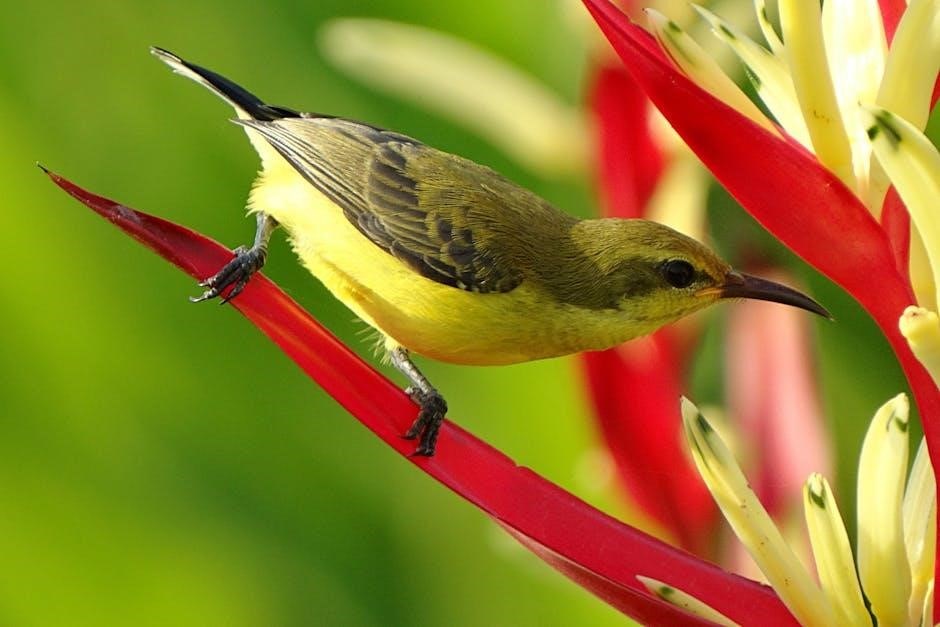Flower colors carry deep symbolic meanings, with hues like red, pink, white, yellow, orange, purple, blue, and green each conveying unique emotions and messages.
1.1 Importance of Flower Colors in Symbolism
Flower colors universally communicate emotions and messages, playing a vital role in celebrations, expressions of love, and cultural traditions. Red symbolizes passion, while white represents purity, and pink conveys admiration. Colors like yellow and purple evoke joy and royalty, respectively. Understanding these hues helps in selecting the right flowers for specific occasions, ensuring heartfelt expressions align with intended meanings.
1.2 Overview of Common Flower Colors
Common flower colors include red, pink, white, yellow, orange, purple, blue, and green. These hues are widely available and often used in arrangements. Each color offers versatility, from vibrant red and orange to soft pink and white, making them suitable for various occasions and decorative styles.
Red Flowers
Red flowers symbolize pure love, passion, and romance, making them a popular choice for expressing deep emotions and celebrating special occasions with their vibrant, striking beauty.
2.1 Meaning and Symbolism of Red Flowers
Red flowers symbolize pure love, passion, and deep emotional connection. They are often used to express romantic feelings, respect, and admiration. Red roses are the most iconic, representing heartfelt emotions and commitment. In various cultures, red blooms can also signify courage, strength, and celebration, making them a timeless choice for expressing profound sentiments.
2.2 Popular Red Flower Types
Red flowers are renowned for their striking beauty and symbolic meanings. Popular types include roses, symbolizing love and passion; tulips, representing romance; poppies, signifying strength; gerbera daisies, expressing admiration; and peonies, embodying prosperity. These vibrant blooms captivate with their bold hues, making them a timeless choice for expressing deep emotions and celebrations.
2.3 Occasions for Red Flowers
Red flowers are perfect for romantic celebrations, anniversaries, and expressing deep love or respect. They are often used in Valentine’s Day arrangements and wedding bouquets to symbolize passion and commitment. Red flowers also suit formal events or gestures of apology, as they convey strong emotions and sincerity. Their bold beauty makes them ideal for expressing heartfelt feelings on special occasions.
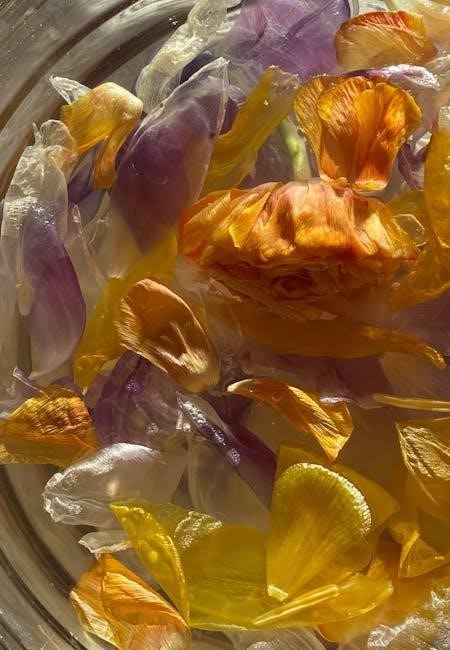
Pink Flowers
Pink flowers symbolize love, appreciation, and innocence, with lighter shades representing admiration and sweetness, while hot pink conveys passion and energy, making them highly versatile.
3.1 Meaning and Symbolism of Pink Flowers
Pink flowers symbolize love, grace, and admiration, with lighter shades representing sweetness and innocence, while hotter pinks convey passion and appreciation. They are versatile, expressing a range of emotions, from gentle friendship to deep gratitude, making them suitable for various occasions.
3.2 Popular Pink Flower Types
Popular pink flowers include roses, symbolizing love and gratitude, carnations, representing admiration, and tulips, expressing passion. Peonies and hydrangeas are also favored for their soft, delicate appearance and romantic connotations. These blooms are widely available and cherished for their beauty and symbolic meanings in various floral arrangements and occasions.
3.3 Occasions for Pink Flowers
Pink flowers are versatile and suit various celebrations. Light pink blooms symbolize admiration and sweetness, perfect for birthdays or new babies. Hot pink flowers add vibrancy to graduations or parties. They also grace weddings, anniversaries, or as get-well wishes, expressing love, gratitude, and joy in delicate yet meaningful ways.
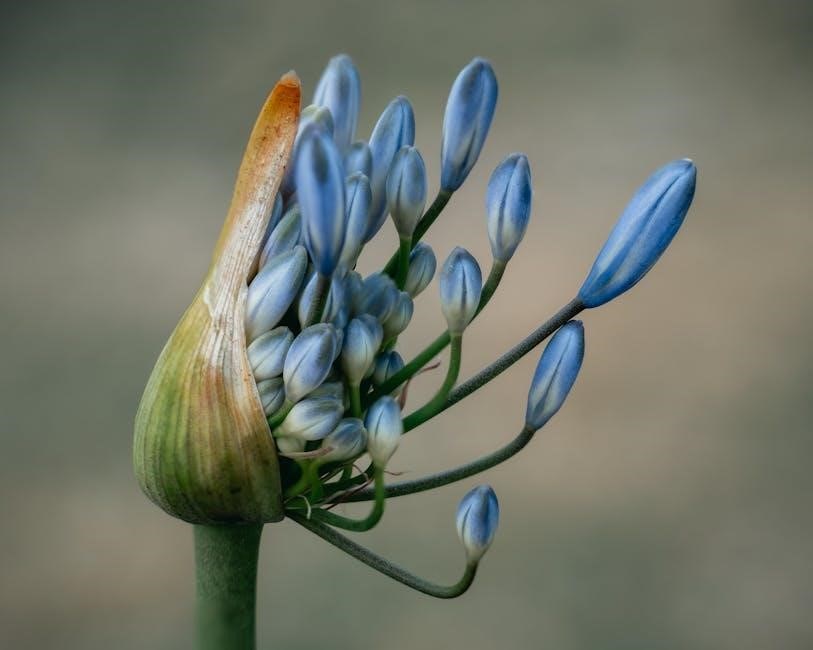
White Flowers
White flowers symbolize purity, innocence, and elegance, often used in weddings and sympathy arrangements to convey respect, hope, and new beginnings.
4.1 Meaning and Symbolism of White Flowers
White flowers symbolize purity, innocence, and new beginnings, often representing peace and hope. They are traditionally used in weddings and ceremonies to signify cleanliness and reverence. White lilies, for instance, embody refined beauty and hope, while white roses express eternal love and remembrance. Their timeless appeal makes them a universal choice for expressing sincerity and grace in various celebrations and solemn occasions.
4.2 Popular White Flower Types
Popular white flowers include roses, lilies, carnations, orchids, and hydrangeas. These blooms are versatile and widely used in arrangements, symbolizing purity, innocence, and elegance. Roses are timeless, while lilies often represent refined beauty. Carnations and orchids add sophistication, and hydrangeas bring a lush, romantic touch to any setting with their delicate appearance.
4.3 Occasions for White Flowers
White flowers are perfect for weddings, symbolizing purity and innocence. They’re also ideal for anniversaries, graduations, and sympathy arrangements, expressing respect and hope. Use them in bouquets for new beginnings or as elegant decorations for formal events, adding a timeless and versatile touch to any celebration or solemn occasion.
Yellow Flowers
Yellow flowers symbolize happiness, optimism, and friendship, often representing warmth and new beginnings. They evoke feelings of joy and hope, making them perfect for celebrating life’s sunny moments.
5.1 Meaning and Symbolism of Yellow Flowers
Yellow flowers symbolize happiness, optimism, and celebration, often representing sunshine and warmth. They convey joy, hope, and new beginnings, making them ideal for celebrations like birthdays or anniversaries. Sunflowers and daffodils are popular examples, embodying bright, cheerful vibes and positivity in various arrangements.
5.2 Popular Yellow Flower Types
Yellow flowers include bright sunflowers, daffodils, tulips, zinnias, gerbera daisies, chrysanthemums, calla lilies, narcissus, marigolds, and pansies. These vibrant blooms add warmth and energy to any setting, with sunflowers symbolizing loyalty and daffodils representing renewal, while tulips and gerbera daisies are popular for their cup-shaped petals and long-lasting beauty.
5.3 Occasions for Yellow Flowers
Yellow flowers are perfect for celebrating joy, happiness, and gratitude. They are ideal for get-well-soon wishes, congratulations, and new beginnings. Bright yellows, like sunflowers, symbolize warmth and energy, while softer tones, like daffodils, represent renewal. Use yellow blooms for birthdays, graduations, or friendship gestures, as they radiate optimism and cheer. Their versatility makes them a great choice for spreading joy in any setting.
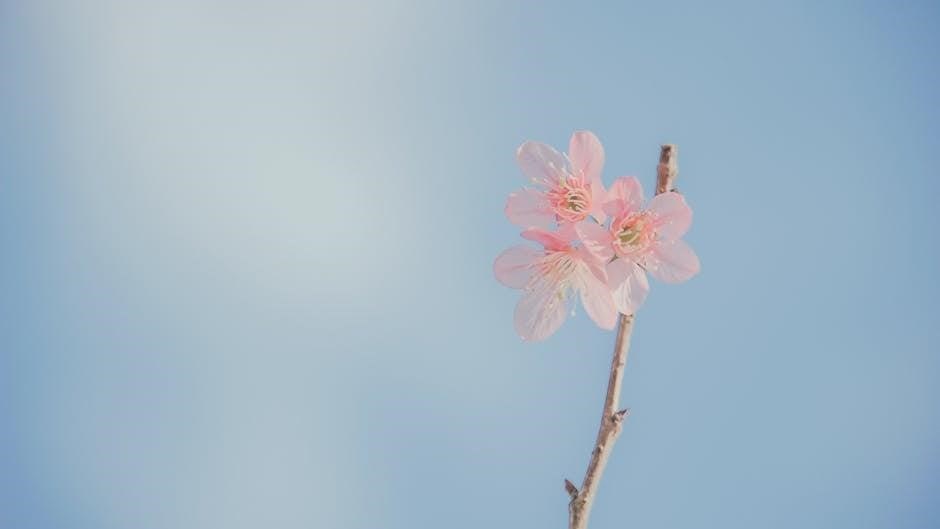
Orange Flowers
Orange flowers symbolize enthusiasm, warmth, and vibrant energy, often representing passion and excitement. They are perfect for autumn arrangements and celebrations, adding a dynamic, inviting touch.
6.1 Meaning and Symbolism of Orange Flowers
Orange flowers symbolize enthusiasm, passion, and excitement, often representing joy and celebration. They convey warmth and energy, making them ideal for expressing vibrant feelings; Orange blooms, like zinnias and marigolds, are perfect for spreading positivity and happiness in various occasions, capturing the essence of lively emotions and sunny dispositions.
6.2 Popular Orange Flower Types
Popular orange flowers include vibrant Gerbera daisies, bright marigolds, and delicate nasturtiums. Calendula, with its warm tones, and zinnias, offering bold orange hues, are also favored. These flowers add energy and warmth to any arrangement, symbolizing enthusiasm and creativity. Their diverse textures and shades make them ideal for various floral designs and gardens.
6.3 Occasions for Orange Flowers
Orange flowers are perfect for vibrant celebrations like weddings, birthday parties, and autumn-themed events. Their energetic vibe makes them ideal for expressing enthusiasm and warmth. Use them in corporate events or anniversaries to symbolize passion and creativity. They also brighten up graduations, baby showers, or any gathering needing a lively, sunlit touch.
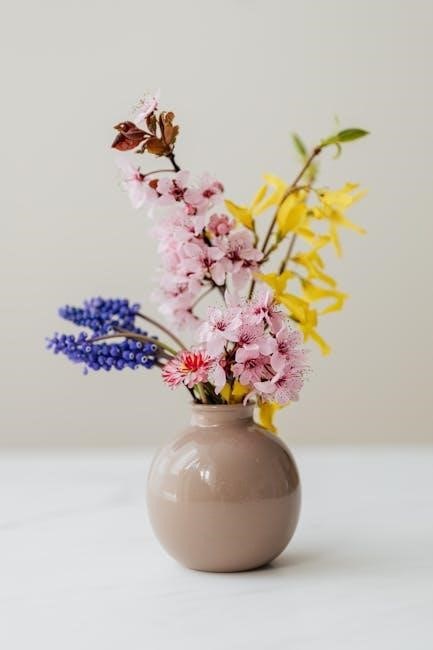
Purple Flowers
Purple flowers symbolize royalty, elegance, and spirituality, often representing admiration and grandeur. Popular types include lavender, orchids, and lilacs, each offering unique beauty and meaning.
7.1 Meaning and Symbolism of Purple Flowers
Purple flowers symbolize royalty, luxury, and grandeur, often representing spirituality and creativity. They evoke feelings of admiration and respect. Lighter shades, like lavender, denote love and devotion, while deeper purples can signify mourning or respect in certain cultures. Their rich, vibrant tones make them timeless and versatile for expressing profound emotions.
7.2 Popular Purple Flower Types
Popular purple flower types include chrysanthemums, zinnias, fairy lobelia, gerberas, clematis, wisteria, hydrangeas, orchids, petunias, and irises. These flowers come in various shades, ranging from light lavender to deep plum, adding elegance and vibrant beauty to gardens and arrangements.
7.3 Occasions for Purple Flowers
Purple flowers are perfect for weddings, anniversaries, and formal events, symbolizing royalty, luxury, and grandeur. They also suit celebrations of success or milestone achievements, adding elegance and sophistication to any arrangement.
Blue Flowers
Blue flowers symbolize calmness, trust, and serenity, often used to express loyalty and confidence. They are ideal for celebrations and as a soothing presence in arrangements.
8.1 Meaning and Symbolism of Blue Flowers
Blue flowers symbolize tranquility, trust, and loyalty, often representing calmness and serenity. They are rare in nature, adding exclusivity to their beauty. Common types include forget-me-nots and delphiniums, which are frequently used to express trust and devotion. Blue flowers also carry spiritual significance, sometimes representing heavenly love or faithfulness in relationships.
8.2 Popular Blue Flower Types
Forget-me-nots, with their delicate blue petals, symbolize love and remembrance. Hydrangeas offer vibrant blue blooms, often used in bouquets. Cornflowers, known for their striking blue color, add charm to gardens. Morning glories and bluebells also captivate with their serene beauty, making them popular choices for floral arrangements and landscapes.
8.3 Occasions for Blue Flowers
Blue flowers are perfect for expressing trust and calmness, making them ideal for weddings, anniversaries, and graduations. They also suit get-well bouquets or sympathy arrangements, symbolizing hope and serenity. Their versatility makes them a popular choice for various celebrations, adding a soothing touch to any occasion with their unique charm and elegance.
Green Flowers
Green flowers symbolize growth, harmony, and nature. Unique and versatile, they bring a fresh vibe to arrangements, with options like orchids and eucalyptus.
9.1 Meaning and Symbolism of Green Flowers
Green flowers symbolize balance, growth, and nature’s harmony. They represent new beginnings, renewal, and good fortune. Often associated with calmness and stability, green blooms are perfect for expressing gratitude or celebrating fresh starts, making them versatile for various occasions like weddings or graduations.
9.2 Popular Green Flower Types
Popular green flowers include Bells of Ireland, known for their vibrant lime-green spikes, and orchids, which offer delicate green hues. Eucalyptus leaves and ferns add fresh, natural beauty, while green roses symbolize harmony and growth. These flowers bring unique charm and versatility to arrangements, blending seamlessly with other colors for stunning displays.
9.3 Occasions for Green Flowers
Green flowers are perfect for spring celebrations, eco-friendly themes, and symbolic gestures. They complement weddings, corporate events, and holidays like St. Patrick’s Day. Use them in arrangements for new beginnings or renewal ceremonies, as their calming tones evoke harmony and growth. Pair green blooms like orchids or eucalyptus with neutral tones for a fresh, natural look.
Mixed Color Flower Arrangements
Mixed color arrangements blend vibrant hues like yellow, orange, pink, and purple, creating a harmonious visual effect that expresses joy, diversity, or complex emotions.
10.1 Meaning of Mixed Color Arrangements
Mixed color flower arrangements symbolize harmony, diversity, and celebration of life. They convey complex emotions, blending joy, gratitude, and love. Vibrant combinations like red, yellow, and orange express enthusiasm, while softer tones of pink, white, and lavender reflect appreciation or sympathy, making them versatile for various occasions and emotional expressions.
10.2 Popular Combinations
Mixed color arrangements blend hues to convey complex emotions. Red and white symbolize love and purity, while yellow and orange evoke celebration. Pastel shades create soft, delicate looks, and vibrant mixes like pink, purple, and blue add bold statements. These combinations are versatile, making them ideal for various occasions, from celebrations to expressing deep sentiments.
11.1 Summary of Flower Colors and Their Meanings
Flower colors evoke emotions and convey messages: red symbolizes love, pink represents admiration, white signifies purity, yellow expresses joy, orange embodies passion, purple denotes royalty, blue reflects calmness, and green stands for growth. Each hue carries unique symbolism, making flowers a universal language for expressing feelings and celebrating life’s moments.
11.2 Final Thoughts on Choosing the Right Flowers
Selecting flowers by color ensures your arrangement conveys the intended emotion; Consider the recipient’s preferences and the occasion. Red symbolizes love, while white represents purity. Yellow expresses joy, and purple denotes elegance. Mix colors thoughtfully to create a meaningful bouquet. Remember, the right flowers can speak volumes, making your gift truly unforgettable and heartfelt.
